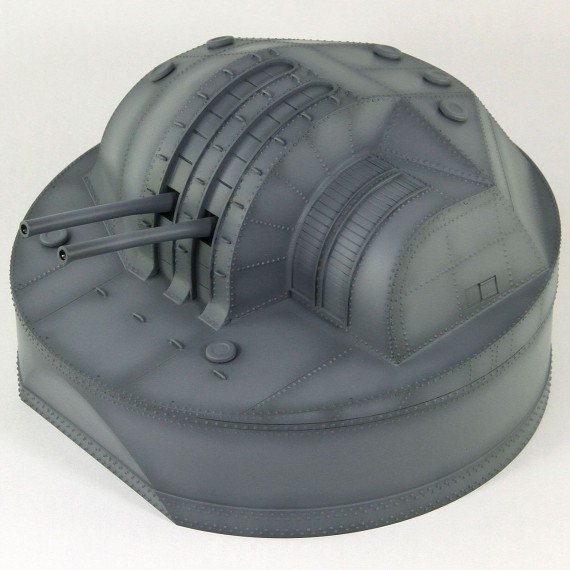.png)
The Todd Shipbuilding Company was told politely that as the ship was being built for a foreign power, that no first line parts should be used. The Tennessee class was being built at this time so the time line of weapons etc to be used was from the Pennsylvania class. The ship was over a hundred feet longer than the Tennessee's as it had three times or more machinery power to produce 90,000shp to put the ship into the fast battleship class rather than the 'fleet speed' ships the US Navy was building at that time. Though Todd's had been told not to put any modern US Navy parts aboard, Todd's did try out some modern works, like the increased freeboard and amount of sheer forward to help maintain speed in rough weather and to stop the plunging of the bow which was a popular problem with the earlier dreadnoughts.
With the US entry into World War One, work on the ship was put on hold while war priority work was undertaken at the Todd yards. The ship was resumed in late 1918 and finally signed off for collection by the Chinese in 1920. Two ships full of seaman duly arrived, went through a months training and were then unleashed on the worlds sea lanes. The Dingyuan made it across the Pacific to Chinese waters where the ship went around the major ports showing the flag to the people. The Dingyuan proved to be excellent at wiping out pirates nests. Where the big 14" guns could fire ten miles inland and destroy the pirates boats and harbours. The previous patrol gunboats could not fire that far and the pirates knew almost to the inch how far their weapons could fire and based themselves out of range. No such problems for the Dingyuan.
For fifteen years the Dingyuan had cruised around the South China Sea and Yellow Sea. Often spending months in port as the government was unable to pay for the ship to be boiler cleaned, bottom cleaned or pay the crew. Much of the maintenance work got shelved on a regular basis. The Dingyuan was an enigma in a land that was based on warlords and armies. 1937 and the second Sino-Japanese war breaks out with Japan taking all the coastal ports and zones, giving the Chinese no access to the sea. The three modern ships Dingyuan, Ning Hai and Ping Hai were sunk or disabled by the Japanese then either raised and repaired or rebuilt at Japanese shipyards. The Dingyuan had been torpedoed and bombed by aircraft and had had to be beached.
.png)
Raised and patched. the hulk was towed to a Japanese Navy yard for refurbishment. The ship was quite a curiousity for the Japanese, an American built ship they could pore over to their hearts content. What they would learn would help them in less than four years time. A two year rebuilding program was worked out to bring the 1920's ship up to 1940 Japanese standards. New Bridge structures, directors and optics, modern AA and secondary guns in a dual purpose format. The engines and boilers were removed and refitted with the same installation as the Kongo Class, a new armoured main deck was fitted after the new machinery had been installed.
So there we have a battleship built in the USA for China. Sunk by the Japanese. Raised from the mud and rebuilt. Now ready to fight against its creators. What can I do with it now?
All thoughts and ideas to nigevids@gmail.com.
